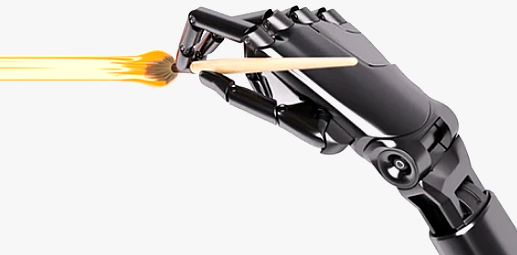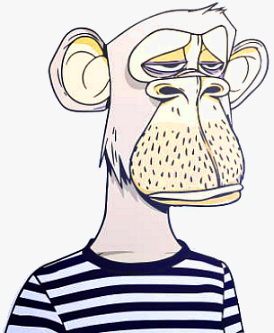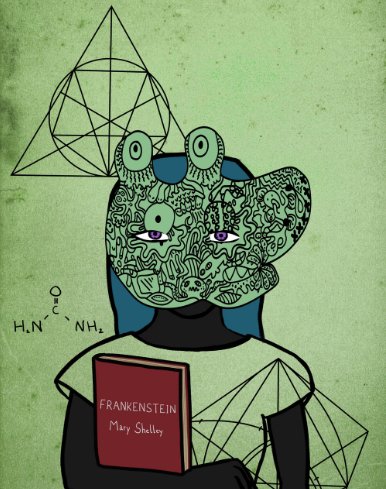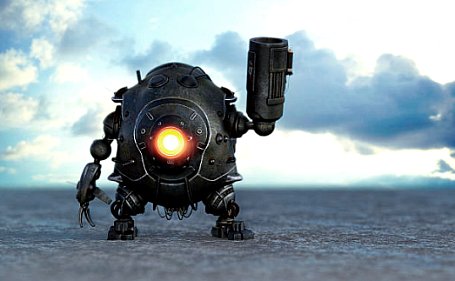Accredited InvestorsAltcoinAnatoli UnitskyAnti-Money Laundering (AML) In CryptoAPIArbitrageArtCoin TokenArticle DirectoryASICAuction Terminology GlossaryBasics of Stock Market InvestingBear MarketBest Crypto Payment Provider In the WorldBitcoinBlockchainBlockchain ConfirmationBlockchain Consensus MechanismBlockchain ForkBlockchain GlossaryBored Ape Yacht ClubBuild a Business That OutperformsBull MarketBuying SkyWay SharesByzantine Fault Tolerance (BFT) ExplainedCasascius CoinCentral Bank Digital Currency (CBDC)Centralized Crypto ExchangeCoinCoinsetCold WalletCollateralCommodity Futures Trading Commission (CFTC)Cross-Chain TechnologyCRUCrypto ExchangeCrypto GlossaryCrypto JokesCrypto Terms to KnowCrypto TickerCryptocurrencyCryptographyCryptojackingCryptounit BlockchainCryptounit GlossaryCryptounit ProgramdApp (Decentralized Application)Dead CoinDecentralized Exchange (DEX)Decentralized Finance (DeFi)Difference Between Bitcoin and EthereumDifferent Ways of Investing MoneyDigital CurrencyDistributed LedgerDo Your Own Research (DYOR)Dollar Cost Averaging (DCA)Dow Jones Industrial Average (DJIA)EncryptionERC-20ERC-721EthereumEvoScentFear Of Missing Out (FOMO)Fear, Uncertainty and Doubt (FUD)Fiat MoneyFNT Fintech CompanyGenesis BlockGlobal Unit PayGlossary of Banking TermsGlossary of Business TermsGlossary of Financial TermsHalvingHODLHot WalletHow Do I Start InvestingHow Rich is Satoshi Nakamoto?How to Create a BlockchainHow to Find Private InvestorsHow to Get Into FintechHow to Program Smart ContractsI Am Thrilled to Be a Part of This Global ProjectInitial Coin Offering (ICO)Initial Public Offering (IPO)Initial Token Offering (ITO)Innovation Basalt TechnologyInnovative Transportation TechnologiesInternational Bank Account Number (IBAN)Investing in Gold Mining StocksInvesting in Gold MiningJagerJoy of Missing Out (JOMO)Know Your Customer (KYC)LedgerLiquidity in CryptocurrencyMaker and Taker Fees in Crypto TradingMarket Capitalization (Market Cap)Meme CoinMetal Credit CardMetaMaskMillenials Now Have Access to Generational WealthMy Best Investment EverNew Digital EvolutionNFT GlossaryOff-Chain TransactionsOn-Chain TransactionsOpen Edition NFTPeer-to-Peer (P2P)Personal Loan GlossaryProbably the Best STO on the MarketProof of Stake (PoS)Real Estate Glossary of TermsReal Estate Investing GlossaryRebase TokenSecurities and Exchange Commission (SEC)Security Token ExchangesSecurity Token Offering (STO)Soulbound Decentralized Identities for Security TokensSoulbound ID Launch by Stobox Proves a SuccessSoulbound TokensStoboxStock Market GlossaryTestimonialsTether Platform and Token (USDT)UnitEx ExchangeUnitsky String TechnologiesUNTBUSDUValidatorWe Started Investing When We Were 25What are Blue Chip NFT?What are Blue Chip Stocks?What are Crypto Assets?What are Crypto Smart Contracts?What are CryptoPunks NFT?What are Digital Assets?What are Digital Collectibles?What are Gas Fees?What are Gas Wars?What are Hashmasks?What are Non Fungible Tokens?What are Non-Sufficient Funds (NSF)?What are Soulbound Tokens (SBT)?What are Stablecoins in Crypto?What are Transactions Per Second (TPS)?What are Utility NFTs?What are Utility Tokens?What Does Burning Crypto Mean?What Does Diamond Hands Mean?What Does Paper Hands Mean?What Does To The Moon Mean?What Does WAGMI Mean?What Happened to Satoshi Nakamoto?What is a 51% Attack?What is a Baby Boomer?What is a Backlink?What is a Banner?What is a Barcode?What is a Bid-Ask Spread in Crypto?What is a Block in Blockchain?What is a Block Reward?What is a Blockchain Address?What is a Blockchain Node?What is a Blockchain Oracle?What is a Blog?What is a Bond?What is a Bot?What is a Broker?What is a Business Accelerator?What is a Cash Cow?What is a Commercial Bank?What is a Commodity?What is a Con?What is a Credit?What is a Credit Limit?What is a Credit Rating?What is a Crypto Airdrop?What is a Crypto Bridge?What is a Crypto Scam?What is a Crypto Token?What is a Crypto Wallet?What is a Crypto Whale?What is a Crypto Winter?What is a Cryptocurrency Public Ledger?What is a Cryptocurrency Roadmap?What is a DAO?What is a Dark Pool?What is a Day Trader?What is a Dead Cat Bounce?What is a Default?What is a Derivative?What is a Digital Credit Card?What is a Fiscal Quarter?What is a Fungible Token?What is a Governance Token?What is a Grace Period?What is a Hard Fork?What is a Hot Wallet?What is a Hybrid Blockchain?What is a Hybrid PoW/PoS?What is a Joint Account?What is a Market Cap?What is a Merkle Tree in Blockchain?What is a Mining Farm?What is a Nonce? What is a PFP NFT?What is a POS System?What is a Prepaid Card?What is a Private Blockchain?What is a Private Key?What is a Public Blockchain?What is a Public Key?What is a Reserve Currency?What is a Ring Signature?What is a Routing Number?What is a Rug Pull in Crypto?What is a Safe Deposit Box?What is a Satoshi?What is a Security Token?What is a Seed Phrase?What is a Shitcoin?What is a Sidechain?What is a Soft Fork?What is a Spot Market?What is a State Bank?What is a SWIFT Code?What is a Tax Identification Number (TIN)?What is a Time Deposit?What is a Transaction Account?What is a Variable Interest Rate?What is a Virtual Assistant (VA)?What is a Virtual Card?What is a Virtual Currency?What is a Visa Card?What is a Whitelist in Crypto?What is a Whitepaper?What is Accounts Payable (AP)?What is AMA in Crypto?What is Amortization?What is an Accrual?What is an ACH Transfer?What is an Actuary?What is an Addendum?What is an Algorithm?What is an Angel Investor?What is an Annuity?What is an Asset?What is an ATM?What is an Atomic Swap?What is an Audit?What is an Avatar?What is an EIN?What is an Embargo?What is an Entrepreneur?What is an IDO (Initial Dex Offering)?What is an Interest Rate?What is an Internet cookie?What is an Investment Bank?What is an NFT Drop?What is an NFT Floor Price?What is an Ommer Block?What is an Orphan Block?What is an Outstanding Check?What is an Overdraft?What is Artificial Intelligence (AI)?What is B2B (Business-to-Business)?What is B2G (Business-to-Government)?What is Bartering?What is Bitcoin Dominance?What is Bitcoin Pizza Day?What is Blockchain Immutability?What is Blockchain Used For?What is BRICS?What is Business-to-Consumer (B2C)?What is C2C (Customer to Customer)?What is Capitalism?What is Catfishing?What is CFD Trading?What is Check Kiting?What is Cloud Mining?What is Communism?What is Content Marketing?What is Decentralization in Blockchain?What is DeFi in Crypto?What is Delisting?What is Depreciation?What is Digital Marketing?What is Diversification?What is Double Spending?What is Dumb Money?What is Dumping?What is Earnings Per Share (EPS)?What is Economics?What is Email Marketing?What is Equity?What is Etherscan?What is Fintech?What is Foreign currency?What is Forex?What is Fundamental Analysis (FA)?What is GameFi?What is Generative Art NFT?What is Gwei?What is Hard Currency?What is Hash Rate?What is Hashing in Blockchain?What is Inflation?What is Initial Game Offering (IGO)?What is Interest?What is Interest Income?What is Mainnet?What is Mastercard?What is Metaverse in Crypto?What is Mining in Cryptocurrency?What is Minting NFT?What is Mobile Banking?What is Money Laundering?What is NFT Alpha?What is NFT Metadata?What is NFT Rarity?What is NGMI Meaning?What is Nominal Interest Rate?What is Online Banking?What is Open-End Credit?What is OpenSea NFT Marketplace?What is Personal Identification Number (PIN)?What is Play-to-Earn?What is Polygon?What is Proof of Authority (PoA)?What is Proof of Work (PoW)?What is Public Key Cryptography?What is Pump and Dump?What is Quantum Computing?What is Refinancing?What is Retail Banking?What is Ripple?What is Sharding?What is Slippage in Crypto?What is Smart Money?What is Solvency?What is Soulbound ID?What is SSL?What is Staking in Cryptocurrency?What is Technical Analysis (TA)?What is Testnet?What is the Ask Price?What is the Better Business Bureau (BBB)?What is the Bid Price?What is the Dark Web?What is the InterPlanetary File System (IPFS)?What is the Gold Standard?What is the Lightning Network?What is the Prime Rate?What is the Sandbox?What is the Secondary Market?What is the World Bank?What is Tier 1 Capital?What is Tokenomics?What is TRC-20?What is Universal Banking?What is Unspent Transaction Output (UTXO)?What is Usury?What is Volatility in Crypto?What is Wash Trading?What is Web3?What is Whisper?What is XRP?What is Zero-Knowledge Proof (ZKP)?Who is Beeple?Who is Satoshi Nakamoto?Who is Vitalik Buterin?Why Tokenization is a Safe HavenWhy You Should Try Your Hand at Trading
What is Generative Art NFT?
- Home
- NFT Glossary
- What is Generative Art NFT?
It's not uncommon for art collectors to shell out millions for a single piece, but what sets the current craze apart is the willingness to pay exorbitant amounts for digital creations like memes, GIFs, and digital paintings - all thanks to the rise of non-fungible tokens (NFTs).

While you may have heard of NFTs, you may not know that AI-generated art is becoming a major player in this field.
Previously, NFTs were typically associated with art created by humans, with the most valuable tokens fetching high prices. However, art made entirely by artificial intelligence (AI) is emerging as a new and exciting frontier. Collectors are buying in, as evidenced by the sale of a collection of NFTs created by a robot artist named Botto for over $1.1 million.
AI-generated art is quickly gaining popularity due to its unique and limitless creative potential. Projects like AI Art House feature generative art NFTs that closely resemble the works of legendary artists like Monet, Mondrian, and van Gogh. And, unlike human-created art, AI-generated pieces can explore new boundaries and possibilities that are beyond human imagination. In short, AI-generated art may just be the next big thing in the world of art.
What is Generative Art NFT?
Generative art is a form of art that is created using algorithms, data, and computer code. Instead of relying solely on the artist's creative output, generative art is produced by a set of rules or instructions that dictate how the artwork is created. This approach results in unique pieces that are often unpredictable and constantly evolving.
Generative art has been around since the 1960s, but advancements in technology have allowed it to gain popularity in recent years. With the rise of digital media and artificial intelligence, generative art has become more accessible and widespread. It can be seen in everything from music and visual art to fashion and architecture.
The process of creating generative art typically involves creating a set of rules, parameters, or algorithms that the computer uses to create the artwork. These rules can be simple or complex, depending on the artist's goals and the desired outcome. The artist might set rules for color, texture, shape, or movement, for example.
One of the main benefits of generative art is its ability to produce unique, one-of-a-kind pieces that cannot be replicated. Because the artwork is created through an algorithm, each piece is slightly different from the others. This means that even if the artist were to create the same set of rules twice, the resulting artwork would still be distinct and unique.
Generative art has many applications and is used in a variety of fields. In architecture, for example, generative design is used to create buildings that are optimized for energy efficiency and sustainability. In music, generative algorithms are used to create unique soundscapes and compositions. And in visual art, generative algorithms are used to create everything from digital paintings to interactive installations.
Generative art is often associated with the concept of randomness and chaos, but it is important to note that the artist still has control over the parameters and rules that are set. The artist's creativity comes into play in determining these rules and in making decisions about which outcomes are desirable and which are not.
The Significance of NFTs in the World of Generative Art
Generative art presents a unique and dynamic experience for viewers, with the artwork constantly evolving and adapting to its environment. The almost infinite number of variations and iterations possible with generative art allows for a series of unique artworks to be created from a single set of rules and parameters.
The potential of generative art in conjunction with non-fungible tokens (NFTs) is significant. NFTs are digital assets stored on a blockchain, which allows for the verification of ownership and authenticity of digital artworks. When combined with generative art, NFTs offer artists the opportunity to sell their artwork as unique, one-of-a-kind assets rather than just digital copies.
Through the use of NFTs, artists can set their own terms and conditions for the use and distribution of their artwork, giving them more control over their creations. NFTs also provide a new way for artists to monetize their work, as they can sell their artwork as NFTs and earn revenue from each transaction. This is particularly beneficial for generative artists, whose artwork can be sold multiple times, creating a new stream of income.
Creating Generative Art NFTs: The Process Explained
The advent of generative art NFTs has opened up a whole new world for artists, allowing them to create unique and algorithm-driven digital artworks that can be owned, collected, and traded. But how exactly are these NFTs created?
The process of creating generative art NFTs involves the use of smart contracts, which are self-executing pieces of code secured on a blockchain. These contracts are designed to create art that is both random and algorithm-driven, making them ideal for generative art.
To create a generative art NFT, an artist typically starts by finding an AI tool and blockchain that can help them create their artwork. They then establish a set of parameters and traits that will make up their NFT, and design one or several variations for each trait. Smart scripts are then added to the NFT design to create new variations of the artwork, with the option to limit the total number of NFTs that can be generated.
To make their artwork even more unique, artists can mint their generative art NFTs and add various codes such as wallet ID, transaction ID, or gas price.
There are many resources, software, tools, and tutorials available to help artists create generative art NFTs. Some popular tools and resources used by creators include Async Art, canvas-sketch, DALL.E 2, openFrameworks, and SketchAr. While most programming languages can be used to create generative art, many artists prefer to use JavaScript.
Overall, the process of creating generative art NFTs is complex and highly dependent on the artist's vision and technical skills. However, the potential for unique and valuable digital artwork is vast, making it an exciting new frontier for artists and collectors alike.
Reasons for Buying Generative Art NFTs
Generative art NFTs have gained popularity for various reasons. Here are some of them:
- Unique investment: Unlike traditional art, generative NFT art is created using algorithms and code, making each piece unique. As a result, collectors can purchase something that is truly one-of-a-kind, increasing the potential for the artwork to appreciate over time.
- Directly support artists: Generative NFT art allows artists to create and sell their work directly to collectors without intermediaries like galleries or auction houses. This empowers artists to keep a larger portion of the proceeds from the sale and maintain control over their work.
- Self-expression: Collectors can showcase their individuality by purchasing generative NFT art that reflects their personal style and preferences. With numerous styles and themes available, there is a piece of generative NFT art for everyone.
- Storytelling: Each piece of generative NFT art has a unique backstory and creation process, often involving complex algorithms and programming. Collectors become a part of that story by owning a piece of generative NFT art, gaining insights into the creative process and the inspiration behind the artwork. This deepens the connection between the collector and the artwork, adding to its emotional and sentimental value.
- Community building: Generative art NFT has built a growing community of collectors, artists, and enthusiasts. By buying and collecting generative art NFT, individuals can connect with others who share their passion for this emerging art form, building valuable relationships and networks.
Should You Invest in Generative Art NFTs?
Generative art NFTs offer a unique and exciting opportunity for collectors to own and invest in one-of-a-kind digital artwork created by AI algorithms. However, it's important to note that this emerging art form is still in its early stages, and it's difficult to predict its future success.
While generative art has been around for decades, the integration of NFTs into the market is relatively new. It remains to be seen whether generative art NFTs will achieve the level of appreciation of traditional art forms. Nonetheless, the recent growth in the generative art NFT market, which generated $2.57 billion in 2021 alone, is a promising sign for its future potential.
As with any investment, it's important to do your research and consider market trends before investing in generative art NFT. While the potential gains may be significant, it's crucial to invest only what you can afford to lose, as NFTs are a highly speculative asset class. Ultimately, the decision to collect generative art NFTs should be based on your personal preference and investment goals.
Related Articles

Bored Ape Yacht Club
Each Bored Ape NFT is a unique piece of digital art that features a cartoon ape with a different combination of attributes, such as hats, clothing, and expressions.

What are Hashmasks?
These Non-Fungible Tokens (NFTs) have been generating a lot of buzz lately, thanks to their unique features and incredible demand.

What is GameFi?
By integrating DeFi protocols into their games, developers can generate revenue through transaction fees and other DeFi mechanisms.
- Home
- NFT Glossary
- What is Generative Art NFT?